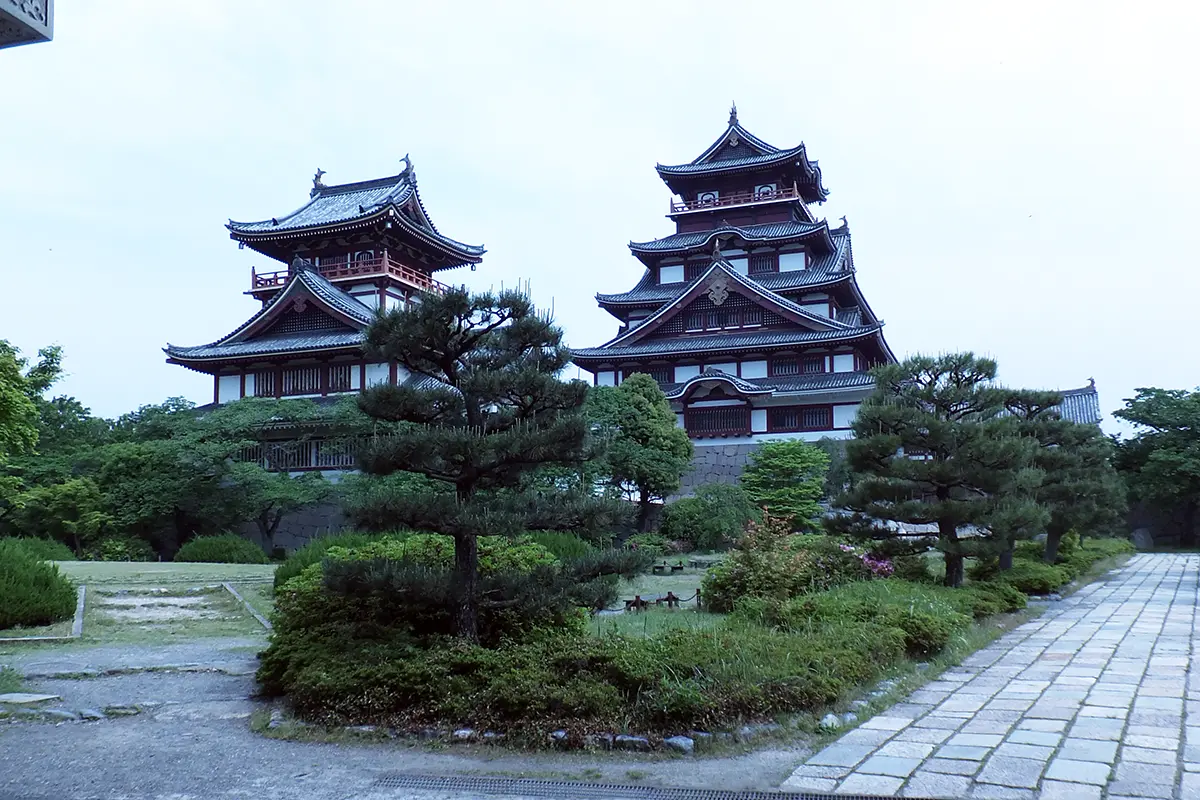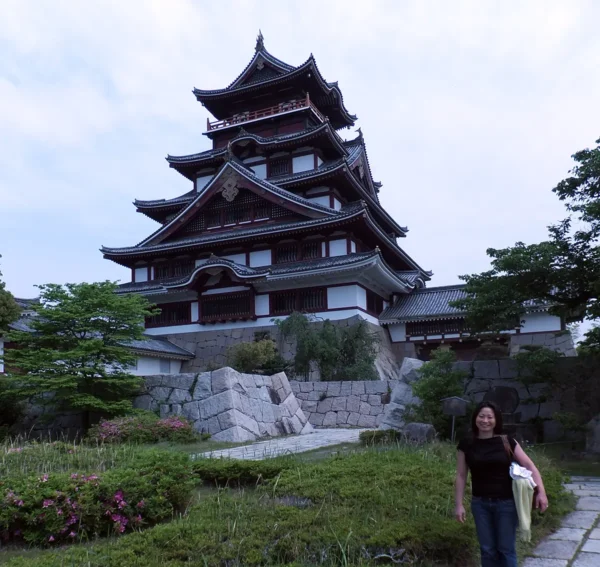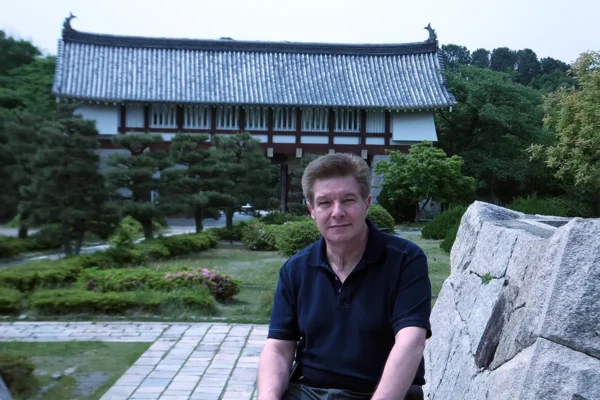Fushimi Momoyama Castle
伏見桃山城
Explore Fushimi Momoyama Castle: Witness Japan's grandeur, heroism, and artistry in Kyoto's serene, historic marvel.

Call this number
Google Map in English
Google Maps in Japanese
We went to the Fushimi Momoyama Castle in the early summer, on a nice sunny day. We decided to walk from the Tanbabashi Station as the map indicated just an 18-minute walk. That was a big mistake. The Japanese castles were usually built on the top of hills to make it hard to be attached by the enemies.
As soon as we started walking, we realized this would be a hard uphill battle! I believe it took more than 30 minutes to climb the winding uphill residential area. To make the day worse, the castle was closed to the public. Even though we could not enter the castle property, we could take a massive castle from the outside of the fence.

The Tanbabashi Station areas offer various attractions. I highly recommend you check out our article, Two Perfect Days in Fushimi, to find out things to do in the Fushimi. The next station, Fushimi Momoyama, has great access to Fushimi’s sake scenes including Gekkeikan Okura Sake Museum, Fushimi Sake Village, Aburacho, and Tamanohikari Sake Brewing Co.
Nestled in the serene residential locale of southern Kyoto, Fushimi Momoyama Castle, often referred to simply as Fushimi Castle, emerges as a monumental relic steeped in Japan’s storied past. Erected between 1592-1594 by the illustrious warlord Toyotomi Hideyoshi, the castle stands as a symbol of the turbulent Sengoku era’s culmination and the dawn of the Azuchi-Momoyama period—a time named in part after this very fortress.

Originally conceived as Hideyoshi’s opulent retirement palace, Fushimi Momoyama Castle transcended the conventional martial facade of a stronghold. Its interiors, resplendent with the Golden Tea Room, showcased walls and utensils adorned in gold leaf, epitomizing the era’s grandeur. Yet, this architectural marvel faced an untimely demise, razed by an earthquake merely two years post-construction, marking the beginning of its tumultuous history.
The castle’s rebirth was swift, yet its fate remained fraught with strife. In 1600, under the stewardship of Torii Mototada, a devoted vassal to Tokugawa Ieyasu, it became the epicenter of a pivotal siege. Mototada’s valiant defense, albeit culminating in a tragic mass suicide, significantly impeded Ishida Mitsunari’s forces, indirectly influencing the decisive Battle of Sekigahara’s outcome. This act of loyalty and sacrifice imbued the castle with an enduring legacy of honor and bravery.
However, the edifice’s existence was short-lived. By 1623, dismantled by the Edo Period’s third shogun’s decree, parts of the castle found new homes across Japan, contributing to various temples and castles. Notably, the blood-stained floorboards, a silent testament to the final stand of Mototada and his men, were repurposed as ceilings in Kyoto’s temples, adding a poignant layer to the region’s cultural heritage.
The original site later honored Emperor Meiji with a tomb, while the Fushimi Momoyama Castle itself was not resurrected until 1964 when a replica was constructed nearby. Although intended as a “Castle Entertainment Park,” this iteration too faced closure in 2003, leaving only the grounds accessible to the public since 2007.
Today, Fushimi Momoyama Castle’s grounds offer a tranquil escape, a stark contrast to its once tumultuous existence. The castle’s narrative, from its inception as a testament to Toyotomi Hideyoshi’s grandeur to its role in pivotal military engagements and its eventual deconstruction, weaves a complex tapestry of Japan’s feudal history. Visitors can immerse themselves in the echoes of the past, pondering the castle’s many lives amidst the quietude of its surroundings.
Accessible via a short journey from Kyoto Station to Kintetsu-Tambabashi Station, the Fushimi Momoyama Castle invites explorers to delve into a bygone era. Though the current structure may only faintly echo its original splendor, the legacy of Fushimi Momoyama Castle remains indelible—a captivating chapter in the saga of Japan’s rich historical landscape.
Contact us at [email protected], or click here to use our contact form.
Submission successful. You will receive a confirmation email, shortly.